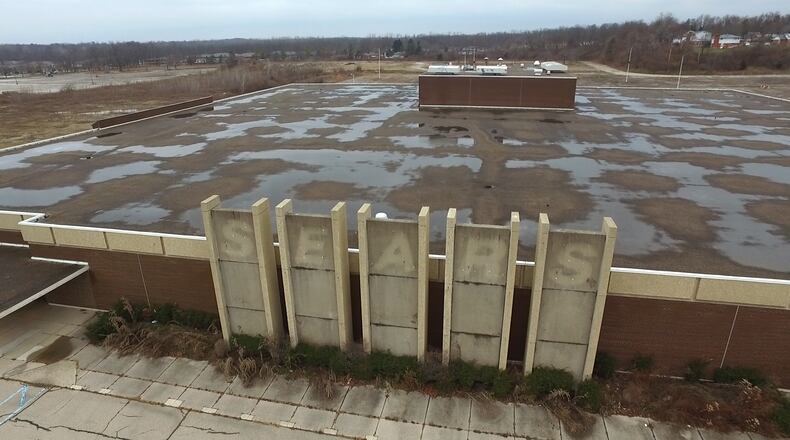According to Powers, the Salem Mall was the first fully enclosed major shopping mall in the Dayton area, a feature which lends to the site’s historical significance.
“It’s representative of that mid-century development of retail shopping, particularly to cater to suburban growth and suburban residents,” Powers said in August. “The development of shopping malls was a significant phenomena in the post-war time period.”
Properties added to the National Register of Historic Places are typically 50 years old or more.
The 125,000-square-foot Sears & Roebuck building, which sits on 4.7 acres at 5200 Salem Ave. in Trotwood, was built in 1966, registration records show.
Placement on the register can serve as a testament to a region’s history and be a source of civic pride, Powers explained. The listing can also give the owner of a property the benefit of qualifying for federal and state tax credits for rehabilitation efforts.
“These tax credits can be very attractive incentives for reinvestment and reusing historic properties within a community,” she said.
The National Register of Historic Places is a program of the National Park Service. When considering a property for placement onto the register, the park service considers its history and significance, as well as its historic integrity at the time of nomination.
“The historic integrity piece is what really sets the national register program apart from other sources of historic documentation in that in order to qualify for the national register, the property must retain some of its key character-defining physical characteristics that help tell its story and reflect its history,” Powers said. “That doesn’t mean it can’t have had any changes over time, but it’s really to help understand its signficance.”
Trotwood officials’ vision for the building include it being the future home of the Funk Music Hall of Fame & Exhibition Center, along with produce-growers and “banking, office space and entrepreneurial programs,” Mayor Mary McDonald said recently.
Ohio has over 40,000 sites and districts listed in the National Register of Historic Places, totaling more than 50,000 individual properties, according to Powers.
About the Author
